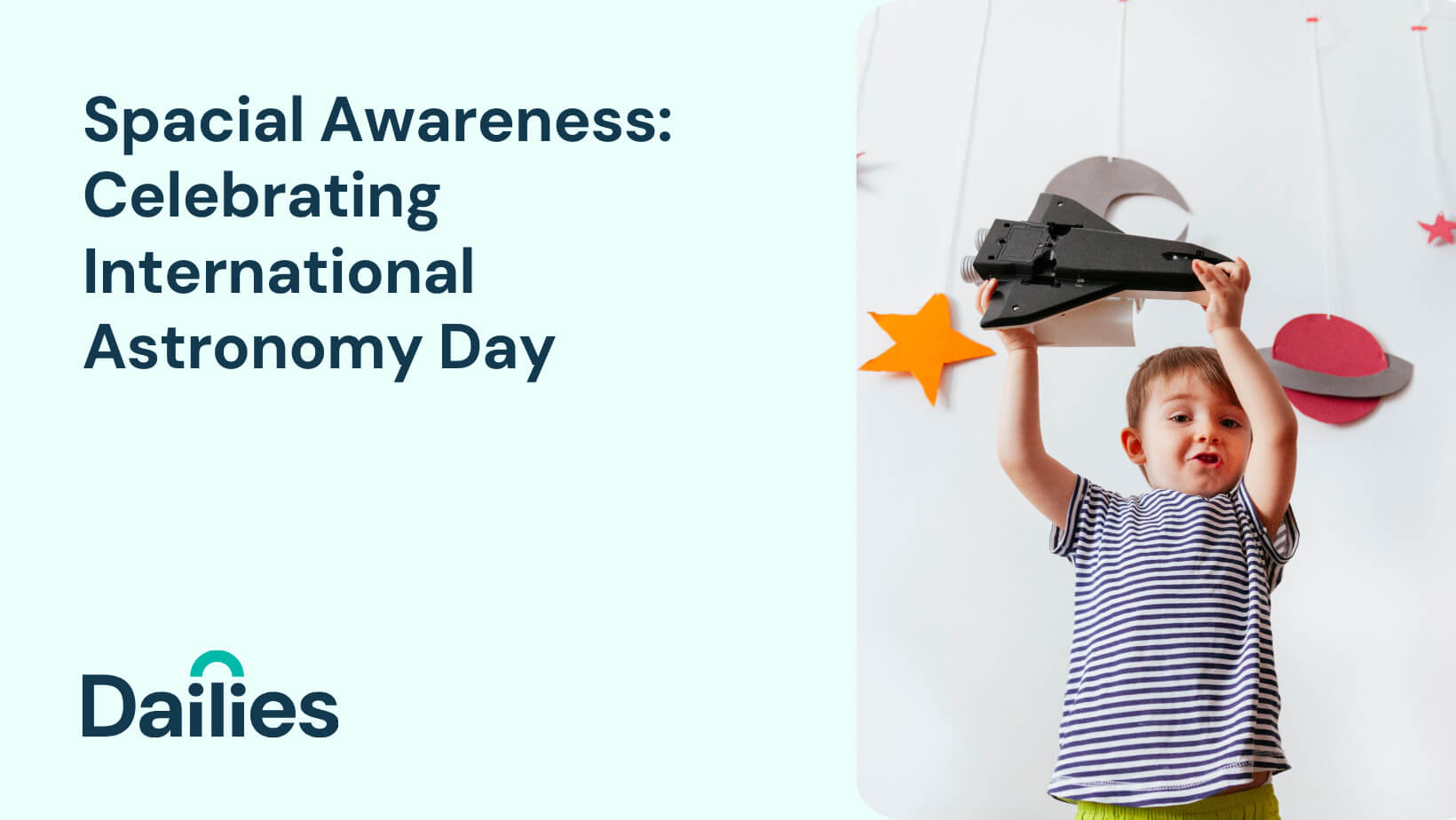Written by
Meghan Bouboulinis Read all posts by this author
Kids Learning About Astronomy Ideas
Have you ever just taken a moment to stare up at the night sky? It’s almost impossible to not be overwhelmed by the sheer size of it; the billions upon billions of stars, the brightness of the moon, maybe you’ve even seen a planet or a constellation. Whether you are a seasoned astronomer or simply a space enthusiast, today is a day to celebrate the night sky.
What Is International Astronomy Day?
International Astronomy Day was started in 1973 by the then president of the Astronomical Association of California, Doug Berger, who wanted to make space more accessible to those in urban areas. His hope was to increase interest in the field of astronomy and give the general public more ways to get involved with it. Telescopes were set up for people to star-gaze and the event was a huge success – this day is now called International Astronomy Day!
A VERY Early History of Astronomy
Our ancestors looked to the night sky for guidance, believing that the actions of the universe could be read in the movement of the stars, the moon, and sun. Early explorers used the stars as a natural GPS system to navigate uncharted terrain and seas. The Mayans were especially observant; keeping recordings and producing calendars – some of which are still used today!
Perhaps one of the most famous examples of early astronomy can be found at Stonehenge in Britain, which dates back to 2800 B.C. and is believed to track celestial events. Roman astronomer Ptolemy, created a model of the solar system that predicted the position of the planets at any date or time. This led the way for Nicolaus Copernicus to propose that the earth actually revolved around the sun and Galileo to discover the craters of the moon, the phases of Venus, and even Jupiter’s many moons.
“Seeing Things Far Away”
Can you believe that some of these discoveries were made WITHOUT a telescope? The first telescope was not patented until 1608, and was described as; “for seeing things far away as if they were nearby.” Galileo utilized the telescope to make his observations and discoveries that ultimately changed the world as we know it. In 1990, the Hubble Telescope, named after scientists Edwin Hubble, was launched into orbit and has been there ever since – that’s 33 years in space!
Originally, Hubble was to only spend 15 years exploring space but it definitely far exceeded that goal. During its time in orbit, it has taken more than 1 million observations, resulting in over 20,000 scientific publications! The discoveries made from Hubble have changed our understanding in every single aspect of astronomy. From the first telescope being used simply to “see things far away” to Hubble making discoveries we could never have imagined, astronomy is drastically evolving what we know about the universe.
Fun Ways to Celebrate
Celebrating International Astronomy Day does not necessarily mean you have to discover new galaxies or name all the stars. There are many ways to celebrate together as a family!
- Take a field trip: Sometimes planetariums and museums offer free or discounted admission on International Astronomy Day
- Bring out your telescope: If you have a telescope, bring it out to a more open area for a better view of the sky
- Create your own telescope: Take an extra paper towel roll and take a peek! You might not be able to see very far, but it’s fun to pretend!
- Read books together: There are so many children’s books about space exploration, visit your local library and check some out
- Research NASA and Hubble: The NASA website is a great resource for pictures, videos, and streams of what is happening real-time in space
Why We Love Today
We love International Astronomy Day because it encourages a natural curiosity about the universe. No matter your age, there is always an interest in “the unknown” and this day perfectly encapsulates that sense of wonder. It’s also an outdoor activity so you can enjoy some fresh air with your family while stimulating your imagination and expanding your vocabulary through questions and observations. One more thing we love about it? It actually happens twice a year! That’s right, International Astronomy Day happens once in the spring and once in the fall, close to the first quarter moon of each season. This means twice the time outside, twice the time to observe, twice the time to discover all about astronomy!

